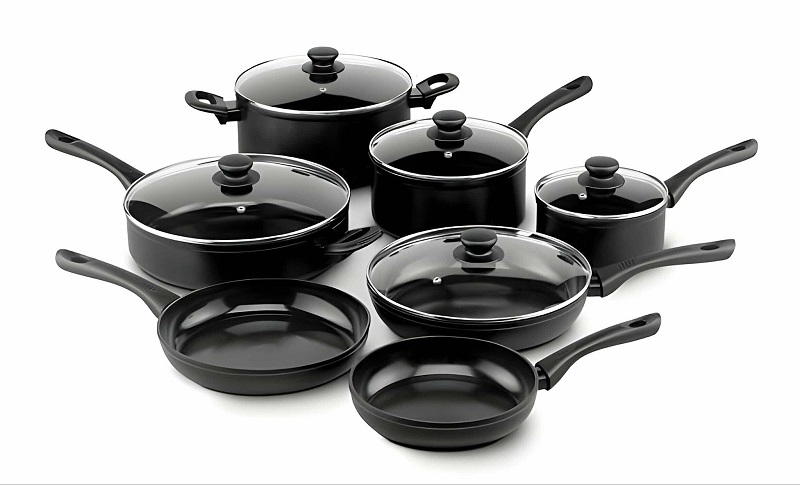In the world of culinary endeavors, having the right tools can make all the difference.
From whipping up a quick weekday meal to crafting elaborate feasts for special occasions, the quality and variety of cookware at your disposal can significantly impact your cooking experience.
In this comprehensive guide, we delve into the realm of cookware sets, exploring everything you need to know to elevate your culinary creations to new heights.
Understanding Cookware Set Basics
Before diving into the specifics of different cookware sets, it’s essential to understand the basics.
A cookware set typically comprises a collection of pots, pans, and other essential cooking vessels designed to cater to various culinary needs.
Hestan Culinary cookware sets often come in different materials, each offering unique advantages and considerations.
Exploring Cookware Materials
1. Stainless Steel: Known for its durability and versatility, stainless steel cookware is a staple in many kitchens. It’s non-reactive, meaning it won’t impart flavors or odors to your food, making it ideal for a wide range of cooking tasks.
2. Non-Stick: Non-stick cookware features a coating that prevents food from sticking to the surface, making it effortless to clean and perfect for cooking delicate items like eggs and fish.
3. Cast Iron: Renowned for its excellent heat retention and ability to develop a natural non-stick surface over time, cast iron cookware is beloved by chefs for its versatility and longevity.
4. Copper: Copper cookware boasts unparalleled heat conductivity, allowing for precise temperature control and even cooking. However, it requires regular maintenance to prevent tarnishing.
5. Aluminum: Lightweight yet durable, aluminum cookware heats quickly and evenly, making it a popular choice for everyday cooking tasks.
Factors to Consider When Choosing a Cookware Set
With numerous options available on the market, selecting the right cookware set can seem daunting. Here are some essential factors to consider:
1. Cooking Habits: Consider your typical cooking routines and the types of dishes you frequently prepare. This will help you determine which pieces are essential for your cookware collection.
2. Budget: Set a budget that aligns with your needs and preferences. While high-end cookware sets may offer superior quality, there are also budget-friendly options that provide excellent performance.
3. Material Compatibility: Ensure compatibility with your cooking appliances, such as induction cooktops or gas stoves, and consider how different materials may interact with your ingredients.
4. Maintenance Requirements: Some cookware materials require special care and maintenance to preserve their performance and appearance. Factor in your willingness to invest time and effort into cleaning and upkeep.
Building Your Ideal Cookware Set
Once you’ve assessed your cooking needs and preferences, it’s time to assemble your ideal cookware set. Here’s a suggested lineup to cover a wide range of culinary tasks:
1. Sauté Pan: A versatile pan with straight sides and a wide, flat bottom, ideal for sautéing vegetables, browning meats, and preparing sauces.
2. Stockpot: Essential for making soups, stews, and stocks, a large-capacity stockpot is a must-have for home cooks who enjoy batch cooking and entertaining.
3. Skillet/Frying Pan: Whether you’re frying eggs, searing meats, or making pancakes, a good-quality skillet is indispensable in any kitchen.
4. Saucepan: Perfect for heating liquids, simmering sauces, and cooking grains, a medium-sized saucepan is a versatile workhorse that sees frequent use.
5. Dutch Oven: With its thick walls and tight-fitting lid, a Dutch oven excels at slow cooking, braising, and baking, making it a favorite for hearty one-pot meals.
6. Bakeware: Include essential bakeware items like baking sheets, cake pans, and muffin tins to round out your cookware collection and accommodate your baking endeavors.
Caring for Your Cookware
To ensure the longevity and performance of your cookware, proper care and maintenance are crucial. Follow these tips to keep your pots and pans in top condition:
1. Cleaning: Always hand wash your cookware with mild dish soap and warm water, avoiding abrasive cleaners or harsh scouring pads that can damage the surface.
2. Seasoning (for Cast Iron): If you own cast iron cookware, regularly season it with a thin layer of oil to maintain its non-stick properties and prevent rusting.
3. Storage: Store your cookware in a dry, well-ventilated area to prevent moisture buildup and avoid stacking heavy items on top of delicate pieces.
4. Avoid Extreme Temperature Changes: Rapid temperature changes can cause warping or cracking in certain types of cookware, so allow your pots and pans to cool gradually before cleaning or storing.
By following these guidelines and investing in high-quality cookware sets tailored to your cooking style, you can elevate your culinary experience and unleash your creativity in the kitchen.
Whether you’re a novice cook or a seasoned chef, the right tools can inspire confidence and unlock endless culinary possibilities.
